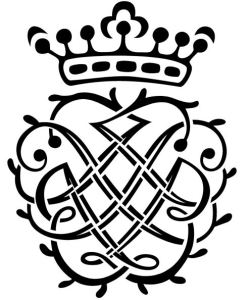Divine Noise – Theatrical music for two harpsichords
Menno van Delft, Guillermo Brachetta
Resonus RES10145. 74:26
Rameau: Platée Suite arr Brachetta; F. Couperin: Le Pais du Parnasse; Le Roux: Suite in F
 You really do need to like the sound of the harpsichord to appreciate this CD, with its two powerful French harpsichords doing battle with each other and, on occasion, the eardrums. Guillermo Brachetta’s arrangement of pieces from Rameau’s Platée lasts about 50 minutes, and runs the whole gamut of the French Baroque vocal, instrumental and dance style. And it is an extraordinary style, aided by a very clever arrangement and the forthright and imaginative playing by Guillermo Brachetta and his former teacher, Menno van Delft.
You really do need to like the sound of the harpsichord to appreciate this CD, with its two powerful French harpsichords doing battle with each other and, on occasion, the eardrums. Guillermo Brachetta’s arrangement of pieces from Rameau’s Platée lasts about 50 minutes, and runs the whole gamut of the French Baroque vocal, instrumental and dance style. And it is an extraordinary style, aided by a very clever arrangement and the forthright and imaginative playing by Guillermo Brachetta and his former teacher, Menno van Delft.
The two harpsichords are by Titus Crijnen after on 1736 Hemsch and 1730 Etienne models, and sound splendid. There is no photograph in the well-produced CD notes to indicate the microphone positions, but here is a sense of right/left contrast although the two players are seated next to each other with the harpsichords in parallel positions, rather than sitting opposite each other as is often the case when two harpsichords play together. Together they produce a wonderful range of sound, each having two manuals and several stops, include the occasionally welcome muted sound of the lute stops.
Brachetta’s programme notes give a detailed history of music for two harpsichords; including examples from the little-known Gaspard Le Roux who included six such pieces in his 1705 Livre de Pieces de Clavessin. These were used as a model for arrangements for six of his other pieces, including an interested version of the opening unmeasured prelude, with the second harpsichord freely improvising around the first player. Although Francois Couperin wrote pieces for two harpsichords, he is represented on this CD by an arrangement of Le Pais du Parnasse, the final sonata of L’Apothéose de Corelli from his 1724 Les Goûts Réunis. Here the two harpsichords represent the French style of Lully and the Italian style of Corelli in a convincing argument for the combination of both styles. One harpsichord has the voice of Corelli and the bass-line, which the other add continuo to Lully’s treble line. It all works extremely well and makes for a fascinating programme.
It is interesting to compare Brachetta’s description of Rameau’s rather diffident character with the flamboyant style of his music. The storyline of the opera Platée is a curious one, with a gang of drunken and randy gods creating havoc and playing jokes on an ugly and powerless frog (Platée), in order to teach Jupiter’s long-suffering wife, Juno, a lesson or two. Rameau’s response to this rather unpromising plot is full of fun.
